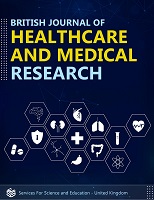Innate Resistance to HIV by CCR5-delta 32 in Serodiscordant Couples in Kinshasa Hospitals
DOI:
https://doi.org/10.14738/bjhr.1203.17620Keywords:
CCR5 delta-32, Discordant couples, Innate HIV resistance, KinshasaAbstract
Background: Worldwide, around 1% of people remain free of Human Immunodeficiency Virus infection without receiving Antiretroviral Therapy. This innate resistance is genetic or immunological in origin, and one of the main mechanisms reported to date is the homozygous Δ32 mutation of the CCR5 gene. Objective: Search for the delta 32 mutation of the CCR5 gene in HIV discordant couples in Kinshasa. Methods: Descriptive cross-sectional study of different HIV serodiscordant heterosexual couples followed at CHME Monkole and CS Sainte Anne in Kinshasa, DRC, from November 2021 to June 2022. Data were collected from information sheets drawn up by the research team and from computerized patient records in the Infectious Diseases Unit of these centers. Blood was collected from a peripheral vein in an EDTA tube. It was used for biomolecular analyses. Conventional PCR was performed to detect the CCR5-delta 32 mutation. Results: Of a total of 514 heterosexual couples followed for HIV, 472 were sero-concordant and 42 were HIV-serodiscordant, representing a discordance frequency of 8.2%. Eighteen discordant couples (3.5%) consented to participate in the present study. The heterozygous CCR5-delta 32 mutant genotype was found in 11.1% of HIV-negative partners. The chi-square test did not show a significant relationship between serodiscordance and the CCR5-delta 32 mutation. Conclusion: The frequency of HIV-discordant couples and of heterozygous CCR5-delta 32 mutation is significant. CCR5-delta 32 may account for the serodiscordance of couples in the DRC.
Downloads
Published
How to Cite
Issue
Section
License
Copyright (c) 2025 Isaac Woto Tshikuma, Simplice Makoka Kivuvu, Charlotte Tshinguta Londji, Berry Bongenya Ikolango, Erick Kamangu Ntambwe

This work is licensed under a Creative Commons Attribution 4.0 International License.






